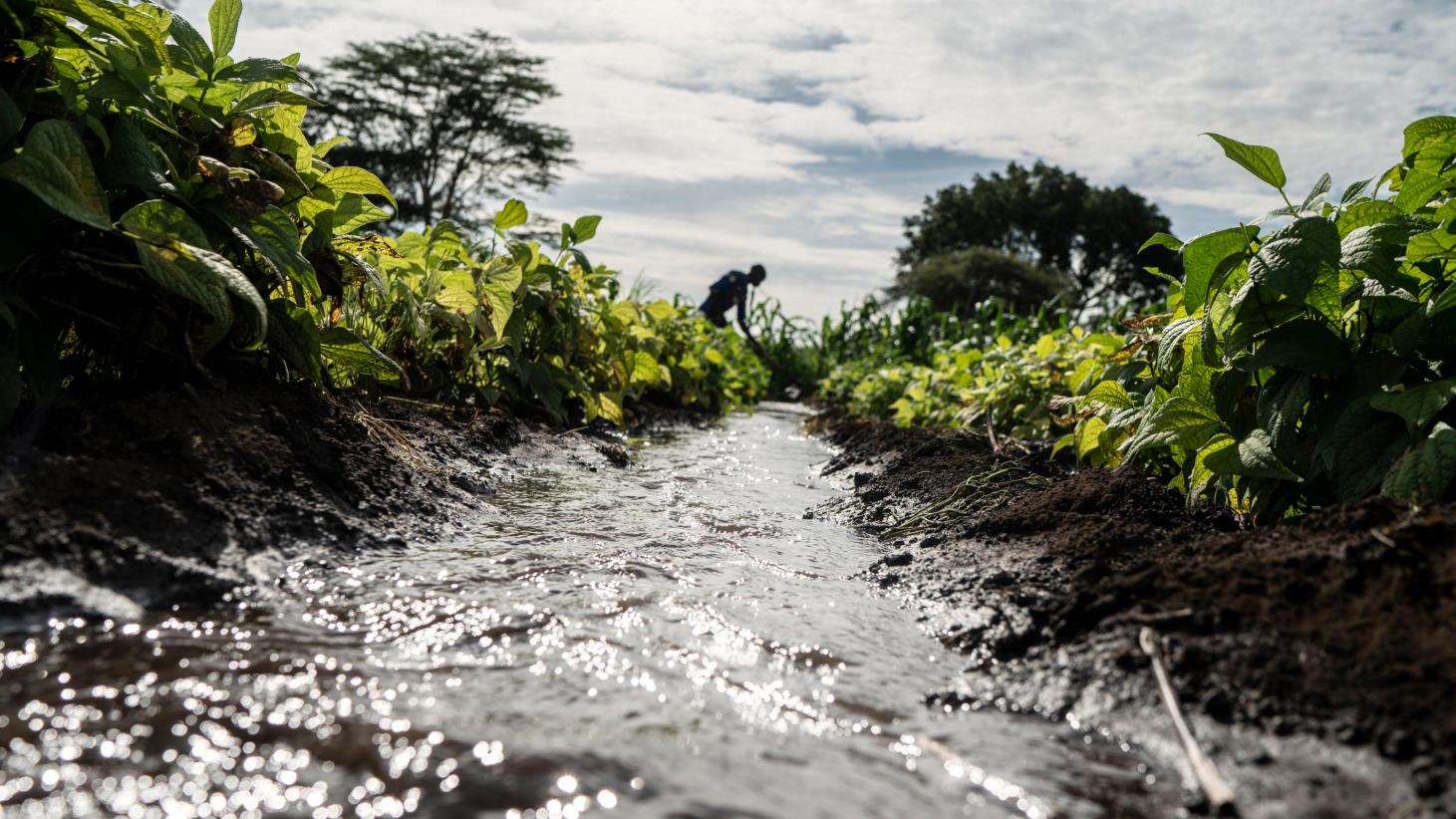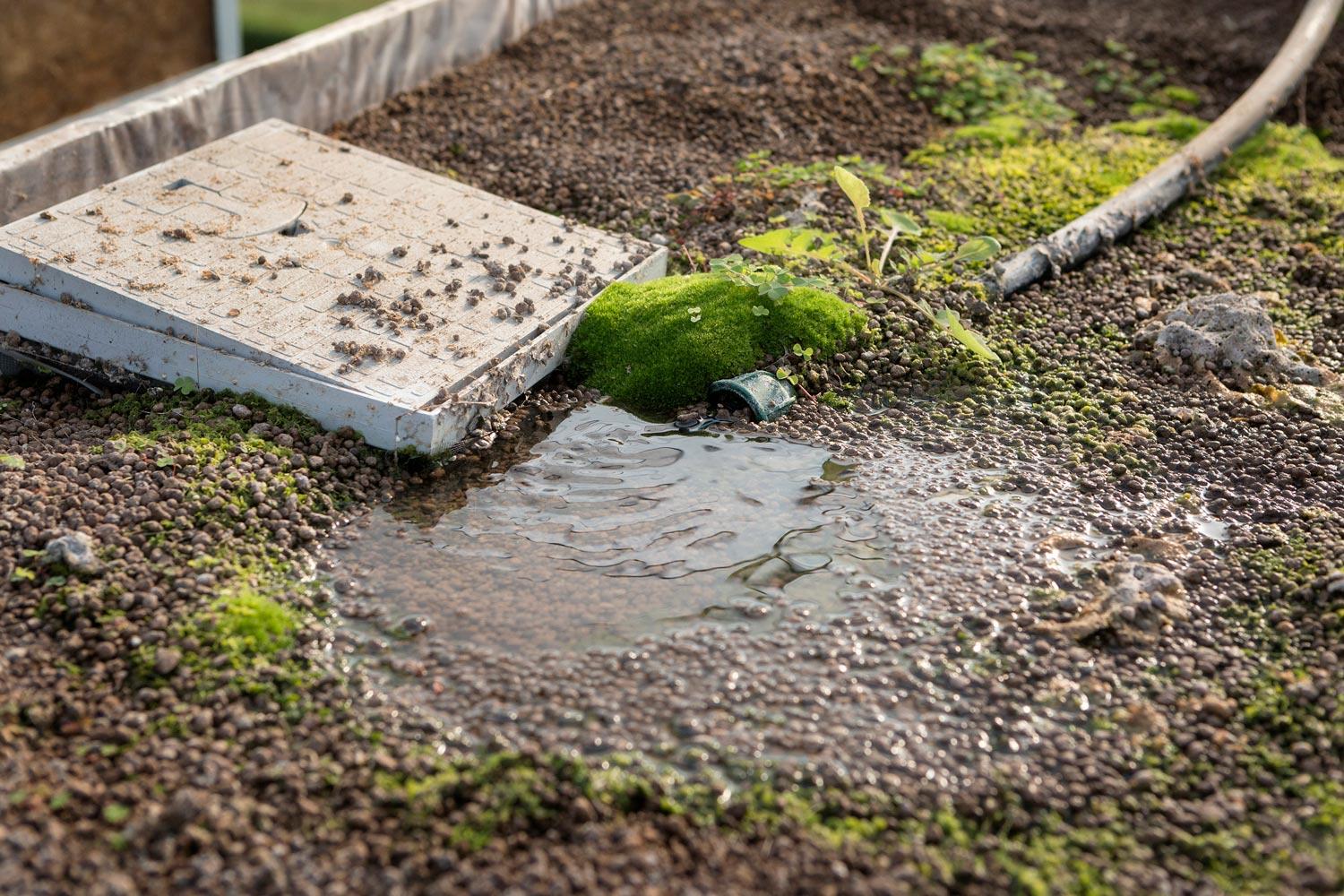
Safe water saves water
How new Codex Alimentarius guidelines can boost water conservation
Meeting the competing water needs for industries, households and agriculture is a challenge for many countries. ©FAO/ Fredrik Lerneryd
14/12/2023
In the capital of Honduras, Tegucigalpa, water shortages are a fact of life. Many households don’t have access to safe drinking water and water sources, like aquifers and lakes, are only depleting. Meanwhile, needs are expanding. A growing population, increasing industry and expanding agriculture are stretching water resources to worrisome capacities.
“There is this competition between agriculture and feeding people and having potable water for households,” says Mirian Bueno, Technical Director for Food Safety with SENASA, the Honduran government's agricultural food and safety division.
“As agriculture continues to grow, what will happen to the people in these urban areas?” she said. “In the capital, for example, potable water for people to drink and meet their basic needs is very scarce.”
Grappling with the delicate balance between industrial, household and agricultural water needs is a common challenge for many countries.
Water is an invaluable resource not only for our daily lives but for food production and processing. But the pressure on this vital resource is mounting every day.
While there is no real substitute for water, how water is used or reused is increasingly relevant in searching for solutions to scarcity.
The Codex Alimentarius Commission, the joint food standard-setting body of the Food and Agriculture Organization of the United Nations (FAO) and the World Health Organization (WHO), started looking at the various types of water and its suitability for different uses in food production and processing as one way that potable water can be conserved.
Previously, the Codex Alimentarius’s fundamental text, the General Principles of Food Hygiene, recommended the use of potable or clean water for food production and processing. However, experts around the world began to dig into the practicality and sustainability of this recommendation.
“Some [countries] pointed out the challenges associated with accessing drinking water, whether due to availability or cost, that met the stringent criteria outlined in the WHO guidelines on drinking water. They requested more consideration of this issue, noting that water of drinking quality may not always be necessary," said Sarah Cahill, a Senior Food Standards Officer with the Codex Secretariat.
Responding to these requests, Codex has created a new set of guidelines that address the safe sourcing, use and reuse of water throughout the food production and processing chain, emphasizing that water should be fit for its intended purpose.
In food production, water use can introduce various health threats. It was the job of JEMRA (the Joint FAO/WHO Expert Meetings on Microbiological Risk Assessment) to assess these hazards and evaluate their potential impact on consumer health. JEMRA investigated how different types of water, such as reclaimed, recycled, recirculated or wastewater, can match the purpose for which they are used in order to ensure food safety. These findings went into Codex’s new water guidelines.


A “fit for purpose” approach recognizes that water quality requirements differ based on the scenario. This can help conserve potable water. Left/top: ©Patrick Zachmann/Magnum Photos for FAO. Right/bottom: ©FAO/Isak Amin/WFP
With this “fit for purpose” perspective, the guidelines recognize that water quality requirements differ from one food product to another and from one scenario to another.
“Fit for purpose water for growing or washing a lettuce plant that will be eaten raw is different to that for growing or cleaning a potato that will be cooked before eating. Cooking can get rid of microbiological contaminants like bacteria but with food, like lettuce, that is eaten raw, it is important to use water that will not make the food microbiologically unsafe,” explained Cahill.
Practical application
Back in Honduras, in October 2022, with the support of the JEMRA secretariat and experts, the country was eager to host a workshop where decision tools on water-use, developed by JEMRA and proposed for inclusion in the Codex guidelines, were put to the test.
Industry and government participants from all over Latin America used these decision trees and other tools to assess water sources within production, processing and transportation and determined levels of risk associated with the water. The goal was to ensure the Codex guidelines provided a practical approach in agri-food settings.
In 2023, a national workshop was organized by SENASA to familiarize government officials, industry and academia with the text and tools contained in the guidelines.
“We provided workshop participants with a simple flow diagram of an invented plant based on the JEMRA work and asked them to assess the risk of water coming from different sources considering its intended use and to indicate what kind of treatment they would apply to ensure food safety was maintained,” Bueno said.
The overarching objective was to challenge the prevailing paradigm that exclusively endorses the use of potable water. Bueno saw how the workshop’s practical approach, for example through the analysis of case studies, helped participants understand these principles.
“Changing people’s attitudes was difficult, but that’s what we wanted to do, to get participants to think out of the box, to think of different ways you could use different sources of water with practical tools that can help assess its safety.”

With increasing scarcity of water availability and quality, the new Codex guidelines emphasize the need to manage this resource in a manner that ensures food safety while avoiding water waste. ©FAO
The feedback Bueno has received since the workshop indicates that industries are eager to embrace water reuse after a cost-benefit analysis.
“New water is expensive. They felt it was better for them and the environment if they could reuse water and lower their costs,” Bueno said. This is true across industries and the potential for saving water and money is great. Though the current Codex guidelines focus specifically on vegetable and fruit production, in the coming year, these guidelines will cover the dairy and fisheries sectors as well.
With increasing water scarcity and global disparities in water availability and quality, the Codex guidelines emphasize the need to manage water in a manner that ensures food safety while simultaneously mitigating unnecessary water consumption and waste.
While the Codex guidelines are voluntary, countries such as Honduras, are keen to have guidance on an area of work that can help relieve the current water stress. With challenges only increasing, these guidelines are serving as one other tool in finding solutions to conserving water.
Related links
Learn more
- Website: Codex Alimentarius
- Website: FAO & Food safety and quality
- Publication: General Principles of Food Hygiene
- Publication: Safety and Quality of Water Used in Food Production and Processing

